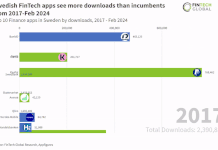As the FinTech sector continues to grow, so does the prevalence and cost of fraud. As such, security remains one of the biggest challenges the sector is facing today. eID outlines the role KYC in onboarding new customers has to play.
According to ElectronicID (eID) a provider of remote user identification systems, FinTech revenue is estimated to have grown by 11.7% by 2024 in the EMEA region and is expected to almost double the sectors revenue between 2017 and 2024.
In 2021 alone, more than 750 FinTech deals took place, amounting to €26bn in investment. However, eID warned that this growth comes has been accompanied by an increase in fraud, with some FinTech companies facing losses of millions of euros.
Moreover, the company pointed to data from KPMG’s Global Banking Fraud Survey which revealed than many companies are only able to recover about 25% of those losses resulting from fraud, not to mention the long-lasting reputational damage on the company.
Therefore, it is imperative that fraud prevention is made a priority. eID said the acceleration in digitisation that has taken the industry by storm has only highlighted this further. The security challenge is one of the biggest challenges of the industry today.
eID has outlined two key factors that FinTechs should take into consideration when it comes to growing their business and onboarding new clients.
The Technology
Firstly, an easy, seamless and secure technology is paramount. Secondly, eID said firms must operate whilst complying with the strictest European regulation in matters of AML and remote customer onboarding.
Turning to the technology to begin with, eID champions the use of video identification technology. The first steps in digital onboarding began before the pandemic, eID explained, but the regulation and the technology has evolved and regulators have ended up accepting an asynchronous verification process through automatic video identification as the best and most efficient method to validate identities and onboard users remotely.
eID said this method is superior to selfie-based identification. In addition, by combining video identification with a Qualified Electronic Signature (QES), the process meets the most demanding regulatory needs in the European framework and become as legitimate as face-to-face identification.
The use of video identification has four main advantages for FinTech, eID said. Firstly it provides a more optimal customer experience, because it is automated, fast and seamless. It allows customers to be securely identified in minutes, anytime and anywhere.
In addition, the acquisition costs of onboarding customers are lower with video identification, it also allows faster time-to-market. Moreover, eID said streaming video technology has become the highest security standard without jeopardising a good user experience.
The Legal Framework
Not only does video identification allow the user to be onboarded in minutes from anywhere, but it also meets the most stringent GDPR, AML and KYC regulations, offering a comprehensive fraud prevention solution.
AML5, or 5AMLD, is the rule standard for the prevention of money laundering and terrorist financing. 5AMLD introduces the European regulation of trust services 920/2014 eIDAS in different industries and delegates the ability to identify new customers to it and to electronic trust services. In short, eID explained this means that the AML5 directive is in line with the requirements defined by eIDAS in terms of remote identifica
eIDAS – the acronym for electronic IDentification, Authen- tication, and trust Services – corresponds to Regulation (EU) No. 910/2014 of the European Parliament and Council of July 23, 2014, and establishes a unique work framework for the different security levels in e-identification and trust services like electronic signatures and person authentication to which all EU State Members must adhere to.
The video by which the onboarding is performed is record- ed, analysed, and properly stored. eID explained this is a very powerful dissuasive measure against fraudsters, and even more reliable than face-to-face verification, as the process is performed with the help of an AI and all electronic evidence will be recorded and stored.
This makes the solution a “game-changer” for the financial market and the best weapon for the growth of FinTech.
Read the full whitepaper here.
Copyright © 2022 FinTech Global











